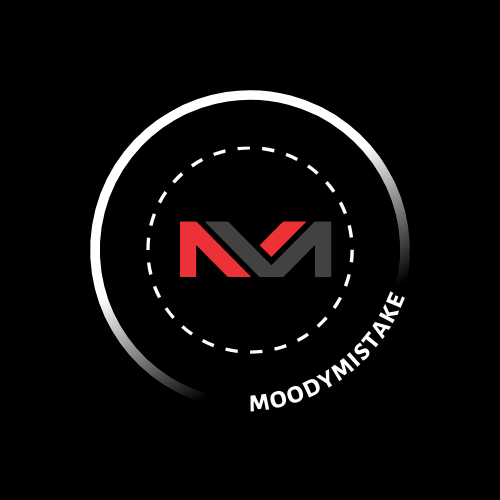In the vast digital landscape of 2025, terms like “rub ranking” are popping up more frequently, sparking curiosity among website owners, SEO enthusiasts, and casual internet users alike. Whether you’ve encountered “rub ranking” while researching online visibility or stumbled upon it in a different context, you’re in the right place to get the full scoop. This guide will break down everything you need to know about rub ranking—what it means, how it applies to various fields, and why it matters today. From its potential roots in SEO to its association with service platforms, we’ll cover all angles with an informational lens to help you grasp its significance and practical uses. Let’s dive into the world of rub ranking and uncover its mysteries!
What Is Rub Ranking?
At its essence, rub ranking is a multifaceted term that can take on different meanings depending on the context. While it lacks a universally standardized definition, two primary interpretations dominate discussions in 2025:
1. Rub Ranking in SEO and Digital Marketing
In the realm of search engine optimization (SEO), rub ranking is often understood as a conceptual or colloquial metric tied to a website’s performance in search engine results pages (SERPs). It’s not an official Google algorithm factor but rather a shorthand for the subtle, nuanced elements that influence how content ranks. Think of it as the “rub” or fine-tuning that goes beyond basic SEO tactics like keywords and backlinks—focusing instead on user behavior, engagement, and overall site quality.
For example, rub ranking might reflect how well a webpage satisfies user intent, keeps visitors engaged, or earns trust through authoritative signals. It’s the polish that separates a good ranking from a great one, making it a hot topic for digital marketers aiming to climb SERPs in a competitive online world.
2. Rub Ranking as a Service Directory Platform
Alternatively, rub ranking is closely tied to platforms like RubRankings.com, which specialize in listing and ranking body rub and massage services. Here, rub ranking refers to a system where providers are evaluated based on user reviews, ratings, and other criteria, helping clients find top-tier services in their area. This interpretation shifts the focus from SEO to a practical, user-driven ranking model within a niche industry.
Given these dual meanings, this guide will explore both angles—SEO implications and service directory applications—to give you a well-rounded understanding of rub ranking. Let’s start with the SEO perspective, then pivot to the service side.
Rub Ranking in SEO: A Deeper Dive
In the SEO world, rub ranking isn’t a term you’ll find in Google’s official documentation, but it’s gaining traction as a way to describe the interplay of less obvious ranking factors. Top-ranking content from sites like usawatchnews.com and digitadmagazine.com suggests it’s about refining your site’s performance to stand out. Here’s what rub ranking might encompass in this context:
Key Elements of Rub Ranking in SEO
- User Engagement Metrics
- Bounce Rate: A low bounce rate (when users stay on your page rather than leaving quickly) signals to search engines that your content is relevant and valuable—a core rub ranking factor.
- Dwell Time: How long visitors linger on your site matters. Longer dwell times suggest your content meets their needs, boosting your rub ranking potential.
- Click-Through Rate (CTR): A compelling title and meta description that drive clicks from SERPs can elevate your rub ranking by showing search engines your page attracts interest.
- Content Quality and Relevance
- High-quality, original content is the backbone of rub ranking. Search engines favor pages that offer unique insights, answer user queries thoroughly, and avoid duplication—a point echoed by top SEO guides.
- Structuring content with headings (H2, H3), bullet points, and concise paragraphs enhances readability, further refining your rub ranking.
- Technical Optimization
- Page Speed: A fast-loading site keeps users happy and improves rub ranking. Tools like Google PageSpeed Insights can pinpoint areas to optimize.
- Mobile-Friendliness: With mobile-first indexing in full swing in 2025, a responsive design is non-negotiable for rub ranking success.
- Crawlability: Ensuring search engine bots can easily navigate your site (via sitemaps and clean code) supports higher rub ranking.
- Authority and Trust
- Backlinks from reputable sites signal credibility, a subtle yet powerful rub ranking booster. Quality over quantity is key.
- Consistent branding and a secure site (HTTPS) reinforce trust, aligning with rub ranking principles.
- Social Signals
- While not a direct ranking factor, shares and engagement on platforms like Twitter or LinkedIn can indirectly influence rub ranking by driving traffic and amplifying visibility.
Why Rub Ranking Matters for SEO
In a crowded digital space, rub ranking is the edge that helps your site rise above competitors. Google’s algorithms are smarter than ever in 2025, prioritizing user experience and value over mere keyword stuffing. By focusing on these nuanced factors, you’re not just optimizing for search engines—you’re optimizing for people, which is the ultimate goal of rub ranking in SEO.
Rub Ranking as a Service Platform: Exploring RubRankings.com
Shifting gears, rub ranking also ties directly to platforms like RubRankings.com, a directory for body rub and massage services. Drawing from insights on rubrankings.com, bodyrubsmap.com, and rubsratings.com, here’s how rub ranking functions in this context:
What Is RubRankings.com?
RubRankings.com is an online hub where users can find, review, and rank providers of body rub and massage services across the U.S. It’s part of a niche ecosystem of platforms (like BodyRubsMap and RubsRatings) that connect clients with professionals offering relaxation and therapeutic experiences. The rub ranking system here is about evaluating service quality based on user feedback, location, and other metrics.
How Rub Ranking Works on These Platforms
- User Reviews and Ratings: Clients rate providers on a scale (e.g., 1-5 stars) based on experience, professionalism, and satisfaction. These ratings form the backbone of rub ranking, determining which providers top the list.
- Search Filters: Users can sort by location, service type (e.g., therapeutic vs. sensual), and rating, making rub ranking a practical tool for decision-making.
- Provider Profiles: Each listing includes details like contact info, photos, and service descriptions, with rub ranking reflecting how well they meet client expectations.
- Community Engagement: Positive reviews can boost a provider’s rub ranking, while negative feedback might lower it, fostering a self-regulating system.
Features of Rub Ranking Platforms
- Wide Coverage: Listings span major cities and regions, with RubRankings.com boasting traffic of over 1.1 million visits in February 2025 (per Semrush data).
- Real-Time Updates: Providers can update their profiles, and rankings shift as new reviews roll in—a dynamic rub ranking process.
- Affordable Advertising: Providers pay to list or enhance visibility, with options to stand out in rub ranking results.
- User-Friendly Design: Intuitive navigation and mobile access make finding top-ranked services easy.
Benefits for Users
- Informed Choices: Rub ranking helps users pick reliable providers based on peer experiences.
- Time Savings: Filters and rankings streamline the search process.
- Trust Factor: High rub ranking scores signal quality, reducing the risk of a subpar experience.
Benefits for Providers
- Visibility: A strong rub ranking attracts more clients.
- Feedback Loop: Reviews offer insights to improve services and climb the rub ranking ladder.
- Marketing Edge: Top rankings differentiate providers in a competitive market.
Comparing the Two Meanings of Rub Ranking
While rub ranking in SEO and service platforms seems unrelated at first glance, they share a common thread: evaluation and optimization. In SEO, it’s about refining a website to rank higher and satisfy users. In service directories, it’s about ranking providers to guide client decisions. Both aim to enhance visibility and trust, albeit in different arenas.
How to Leverage Rub Ranking in SEO
If you’re a website owner or marketer, mastering rub ranking in SEO can elevate your online presence. Here’s a step-by-step guide, inspired by top-ranking content like digitadmagazine.com:
Step 1: Optimize for User Intent
- Research keywords your audience uses (e.g., “rub ranking tips 2025”).
- Create content that directly addresses their questions or needs—think detailed guides like this one.
Step 2: Enhance Engagement
- Use visuals (images, infographics) to break up text and keep readers hooked.
- Add internal links to related content, increasing dwell time and boosting rub ranking.
Step 3: Boost Technical Performance
- Compress images and use a CDN to speed up load times.
- Test mobile responsiveness with tools like Google’s Mobile-Friendly Test.
Step 4: Build Authority
- Reach out for guest posts on reputable sites in your niche to earn backlinks.
- Publish original research or case studies to establish expertise.
Step 5: Monitor and Adjust
- Use analytics (e.g., Google Analytics) to track bounce rate, CTR, and dwell time.
- Tweak underperforming pages to align with rub ranking goals.
How to Use Rub Ranking Platforms Effectively
For those exploring rub ranking on service directories, here’s how to make the most of platforms like RubRankings.com:
For Clients
- Filter Smartly: Narrow searches by location and rating to find top rub ranking providers.
- Read Reviews: Look beyond star ratings to detailed feedback for a fuller picture.
- Contact Directly: Use provided info to verify availability or ask questions.
For Providers
- Optimize Listings: Upload clear photos and detailed service descriptions to improve rub ranking.
- Encourage Reviews: Politely ask satisfied clients to leave positive feedback.
- Stay Active: Update your profile regularly to maintain a high rub ranking.
Pros and Cons of Rub Ranking
In SEO
Pros:
- Enhances user experience, aligning with modern search priorities.
- Drives organic traffic through subtle, effective tweaks.
- Builds long-term authority and trust.
Cons:
- Requires ongoing effort to monitor and optimize.
- Less tangible than traditional SEO metrics like keyword density.
In Service Platforms
Pros:
- Simplifies finding quality services.
- Empowers providers with visibility and feedback.
- Fosters a competitive, merit-based ecosystem.
Cons:
- Rankings can be skewed by fake reviews or low participation.
- Limited coverage in some regions (e.g., rural areas).
Is Rub Ranking Legit and Reliable?
SEO Perspective
As a concept, rub ranking in SEO is legit—it’s a way to frame the nuanced factors search engines value. However, its reliability depends on execution. Without data-driven strategies, it’s just a buzzword. Stick to proven tactics, and rub ranking becomes a powerful tool.
Service Platform Perspective
Platforms like RubRankings.com are legit for their purpose—connecting clients and providers. Reliability varies by user input; high-traffic sites (1.1M visits, per Semrush) suggest trust, but sparse reviews in some areas can limit accuracy. Cross-check with multiple sources for confidence.
The Future of Rub Ranking in 2025
Looking ahead, rub ranking is poised to evolve:
- SEO Trends: As AI and voice search grow, rub ranking may focus more on conversational content and predictive user needs.
- Service Platforms: Expect tighter moderation (e.g., verified reviews) and expanded categories beyond body rubs, enhancing rub ranking credibility.
Real-World Examples of Rub Ranking in Action
SEO Example
A blog optimizing for “best massage tools” refines its rub ranking by adding a comparison table, reducing bounce rate by 20%, and climbing from page 2 to the top 5 on Google.
Service Platform Example
A massage provider on RubRankings.com earns a 4.8-star rub ranking after 50 glowing reviews, doubling client inquiries within a month.
Conclusion: Why Rub Ranking Matters to You
Whether you’re chasing higher SERP positions or seeking a top-notch massage, rub ranking offers value in 2025. In SEO, it’s the secret sauce for standing out in a crowded digital space. On service platforms, it’s a lifeline for informed choices and provider success. By understanding and applying rub ranking principles—be it through content optimization or leveraging directory tools—you’re equipping yourself to thrive in today’s online world.
Ready to explore rub ranking further? Start by auditing your site’s engagement metrics or visiting RubRankings.com to see it in action.




